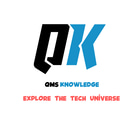Understanding AWS D1.1: The Essential Structural Welding Code for Steel
It provides comprehensive guidelines for the design, fabrication, and inspection of welded steel structures.
WELDING
9/14/20243 min read


Introduction to AWS D1.1
AWS D1.1 is one of the most widely recognized welding standards for structural steel in the world. Here are more in-depth details about its provisions:
1. General Provisions:
Materials Covered:
Primarily covers the welding of carbon steel and low-alloy steel. However, it also provides provisions for other steels, like stainless steels and high-strength low-alloy (HSLA) steels through special requirements.Thickness Range:
The code primarily addresses steel structures of thicknesses starting from 1/8 inch (3 mm) and up. Special considerations may be required for thicker materials.Exclusions:
It does not cover aluminum, stainless steel, or cast iron welding unless otherwise stated.
2. Welding Procedures and Prequalified Procedures:
Welding Procedure Specifications (WPS):
Welders must follow an approved WPS, which includes detailed instructions on welding parameters such as voltage, current, filler material, joint design, and preheating/post-heating requirements.Prequalified Welding Procedures:
These are standard welding procedures that do not require additional qualification testing if they meet specific criteria, such as approved joint designs, base metals, and filler materials. This streamlines the qualification process, as welders can follow prequalified procedures without testing each joint.Essential Variables:
Any significant change in welding parameters (e.g., base metal thickness, welding position, or filler material) will require the requalification of a WPS.
3. Joint Design and Details:
Weld Joint Types:
AWS D1.1 details specific joint types for welding, such as groove welds, fillet welds, and plug welds. Each joint type must adhere to the code’s requirements for strength and quality.Weld Symbol Usage:
The code includes detailed guidance on the use of weld symbols to accurately communicate weld details on engineering drawings.
4. Structural Design Considerations:
Load Requirements:
The code provides guidelines for static and cyclic loading conditions, ensuring that welded joints can handle forces from loads such as wind, seismic activity, and weight of the structure itself.Allowable Stresses:
AWS D1.1 gives formulas and tables for calculating allowable stresses in welded joints, ensuring they meet structural integrity requirements. The calculation of weld size, strength, and fatigue resistance are crucial elements in design.Distortion Control:
Provisions are made for controlling distortion and shrinkage during the welding process, which can significantly impact the final dimensions and strength of a structure.
5. Qualification of Welders and Welding Procedures:
Welder Qualification:
Welders must demonstrate their ability to produce sound welds by passing tests prescribed by the code. They are qualified to specific processes, materials, and positions based on their tests.Procedure Qualification Records (PQR):
When a WPS is not prequalified, it must undergo testing to create a PQR, documenting the actual welding parameters and the results of mechanical tests.
6. Preheat and Inter pass Temperature:
Preheat:
For certain materials and thicknesses, the code specifies the minimum preheat temperature to avoid cracking and other weld defects.Inter pass Temperature:
The maximum and minimum temperatures between welding passes are controlled to maintain weld integrity.
7. Inspection and Testing Requirements:
Visual Inspection:
This is the most common form of inspection and involves checking the weld for defects like cracks, porosity, undercut, and incomplete fusion.Non-Destructive Testing (NDT):
Various NDT methods are used to assess the internal quality of the weld without damaging the structure:Ultrasonic Testing (UT): Uses high-frequency sound waves to detect flaws within the weld.
Radiographic Testing (RT): X-rays or gamma rays are used to capture images of the internal weld structure.
Magnetic Particle Testing (MT): Detects surface and near-surface discontinuities in ferromagnetic materials.
Liquid Penetrant Testing (PT): Finds surface defects by using a dye penetrant.
Destructive Testing:
For welder qualification and procedure qualification, tensile testing, bend testing, and other mechanical tests are conducted to verify the weld’s mechanical properties.
8. Repair of Defective Welds:
AWS D1.1 provides provisions for repairing defective welds, including grinding, re-welding, or applying filler material. Defects like cracks, excessive porosity, and incomplete fusion must be repaired according to the specified procedures.
9. Fatigue and Fracture Toughness:
Fatigue Considerations:
For structures subjected to cyclic loading, the code includes provisions for designing welds to resist fatigue failure, which could lead to cracks over time.Fracture Toughness:
For certain applications, such as bridges or other critical structures, welds must meet minimum fracture toughness requirements to resist brittle fracture under extreme conditions.
10. Seismic Considerations:
AWS D1.1 also contains special provisions for welding in seismic zones, ensuring that welded connections can handle the dynamic forces generated during an earthquake.
11. Annexes and Appendices:
The code includes annexes that provide additional guidance, such as sample welding forms, examples of welding procedure specifications, and methods for calculating allowable stresses.
Appendices:
There are optional guidelines and explanatory material in the appendices, providing more background information and clarification on code provisions.
12. Code Updates and Revisions:
AWS D1.1 is regularly updated to reflect advances in materials, welding processes, and inspection techniques. It's essential to ensure that the latest version of the code is being followed, as older versions may no longer be applicable to current welding practices.
13. Applications of AWS D1.1:
Construction: High-rise buildings, steel-framed structures.
Bridges: Welded steel bridge components.
Oil and Gas: Welding of pipelines, offshore structures.
Shipbuilding: Welded hull structures, reinforcing frames.
Railroads: Structural steel elements of rail infrastructure.
AWS D1.1 ensures that welded structures meet the necessary safety, quality, and performance standards, minimizing the risk of failure or defects in critical structures.
